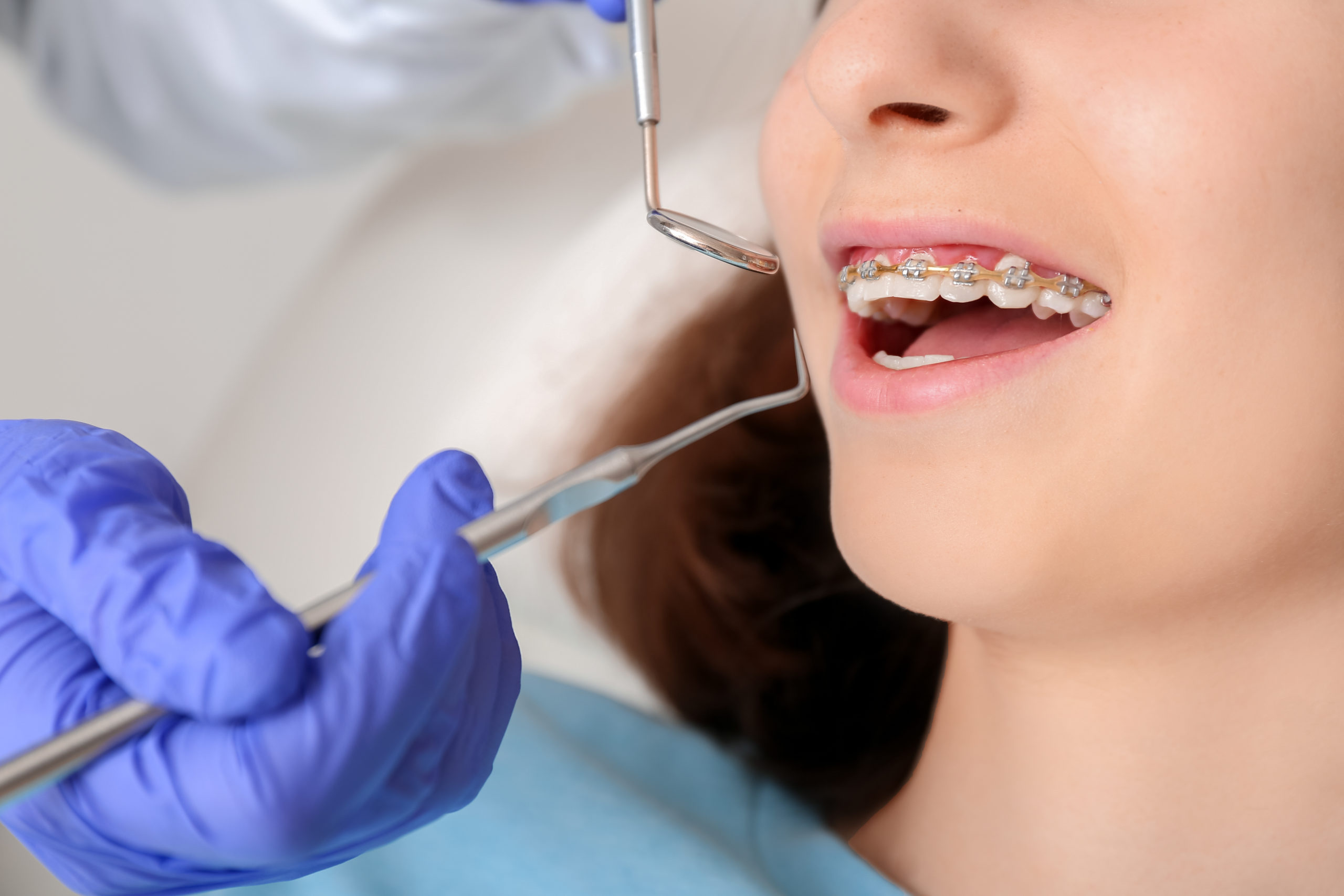Finding the Right Cumming Orthodontist for Your Braces and Aligners Requirements
Finding the Right Cumming Orthodontist for Your Braces and Aligners Requirements
Blog Article
Comprehensive Guide to Orthodontics Procedures for Remedying Dental Imbalances
In the realm of orthodontics, the journey to accomplishing a flawlessly lined up smile includes a myriad of treatments tailored to fix dental imbalances. From typical braces to unnoticeable aligners and also medical options, the field of orthodontics provides a range of services to address varying levels of dental irregularities. Comprehending the intricacies of each treatment, including their devices, advantages, and possible downsides, is essential in making educated choices concerning one's orthodontic therapy. As we navigate with the extensive overview to orthodontic treatments for fixing dental imbalances, the complex information of each approach will certainly unravel, losing light on the course toward a practical and harmonious dental alignment.
Orthodontic Procedures Summary

In addition to clear aligners and standard braces, orthodontists may additionally recommend other treatments like headgear, palatal expanders, or retainers to deal with details alignment problems (cumming aligners). These procedures are customized per client's special demands and may involve a combination of therapies to attain the desired results. Routine changes and surveillance are vital components of orthodontic treatment to make sure progression gets on track and to make any type of required adjustments along the means. By undertaking orthodontic procedures, patients can not only accomplish a straighter smile however likewise boost their total dental wellness and feature.
Standard Dental Braces: Exactly How They Work
When considering orthodontic therapies for dental imbalances, standard dental braces attract attention as a tried and true approach for fixing teeth placing. Standard braces include braces, cables, and bands that function together to use continuous pressure on the teeth, gradually moving them right into the desired placement. The braces are attached to the teeth making use of a special adhesive, and the cables are threaded via the brackets. By readjusting the tension of the cables, orthodontists can regulate the direction and pressure used to each tooth, directing them right into proper positioning with time.
As pressure is applied to the teeth through the braces, the bone surrounding the teeth is improved to support the brand-new tooth placements. Clients will need routine modifications at the orthodontist's office to ensure the braces continue to use the appropriate stress for reliable teeth motion.
Unnoticeable Aligners: Advantages And Disadvantages
These clear, tailor-made trays are virtually unnoticeable when worn, making them an attractive option for people looking for a more aesthetically pleasing orthodontic treatment. Individuals can eliminate the aligners before eating or cleaning their teeth, minimizing the danger of food getting stuck in the device and streamlining the cleansing process.

Surgical Orthodontic Options
Surgical interventions in orthodontics existing viable alternatives for resolving complicated dental misalignments that might not be properly solved through traditional orthodontic treatments. While invisible aligners and typical dental braces can remedy lots of orthodontic issues, certain instances need surgical intervention to attain ideal results. Surgical orthodontic alternatives are commonly suggested for serious malocclusions, significant jaw disparities, and situations where the underlying bone structure requires adjustment to achieve correct positioning.
One common medical orthodontic procedure is orthognathic surgical procedure, which entails repositioning the jaws to deal with practical issues such as trouble chewing or talking. This surgery is often done in partnership with an orthodontist who assists align the teeth before and after the procedure. Surgical orthodontics may additionally include treatments to reveal impacted teeth, get rid of excess gum cells, or improve the jawbone to create an extra harmonious face account.
Before taking into consideration surgical orthodontic choices, patients go through a thorough assessment to establish the necessity and prospective advantages of such interventions. cumming braces. While surgery may appear difficult, it can considerably enhance both the feature and aesthetic appeals of the smile in instances where conventional orthodontic treatments drop short
Retainers and Post-Treatment Treatment

Post-treatment care includes complying with the orthodontist's directions faithfully. This might include proper oral best site health practices, going to follow-up appointments, and wearing the retainers as prescribed. Failing to adhere to post-treatment care instructions can lead to regression, where the teeth slowly return in the direction of their initial positions. Consistent retainer wear, great oral hygiene, and routine dental check-ups are vital for preserving the results accomplished through orthodontic surgery and guaranteeing the long-lasting stability of the corrected oral placement.
Verdict
In final thought, orthodontic procedures offer numerous choices for fixing oral misalignments. Traditional dental braces utilize metal braces and wires to change teeth into proper positioning. Unnoticeable aligners give an even more discreet option but might not be appropriate for all instances. Surgical orthodontic choices are available for a lot more severe imbalances. Retainers are typically made use of post-treatment to maintain the brand-new alignment. On the whole, orthodontic procedures can properly enhance oral health and visual look.
As we navigate with the thorough guide to orthodontic procedures for dealing with oral misalignments, the complex information of each method will unfold, dropping light on the course towards a useful and unified oral dentist dr alignment. - invisalign
One of the most usual orthodontic therapies is the usage of dental braces, which consist of steel brackets and cables that use gentle pressure to progressively shift teeth right into the wanted position.When considering orthodontic treatments for dental misalignments, standard dental braces stand out this website as a reliable approach for dealing with teeth placing. In addition, invisible aligners may not be suitable for complex orthodontic issues that require more significant teeth activity, as they are generally recommended for mild to moderate cases. Retainers are customized orthodontic devices developed to hold teeth in their fixed positions after the completion of orthodontic therapy.
Report this page